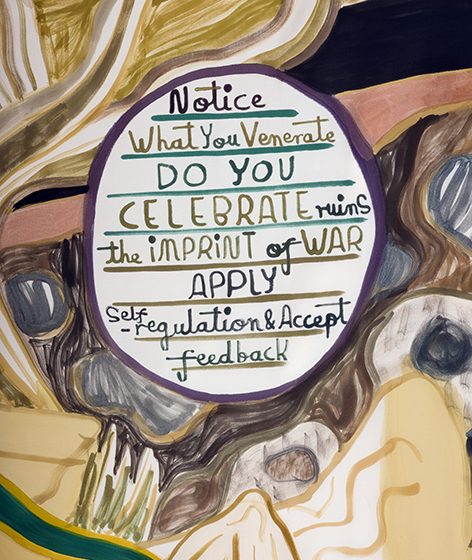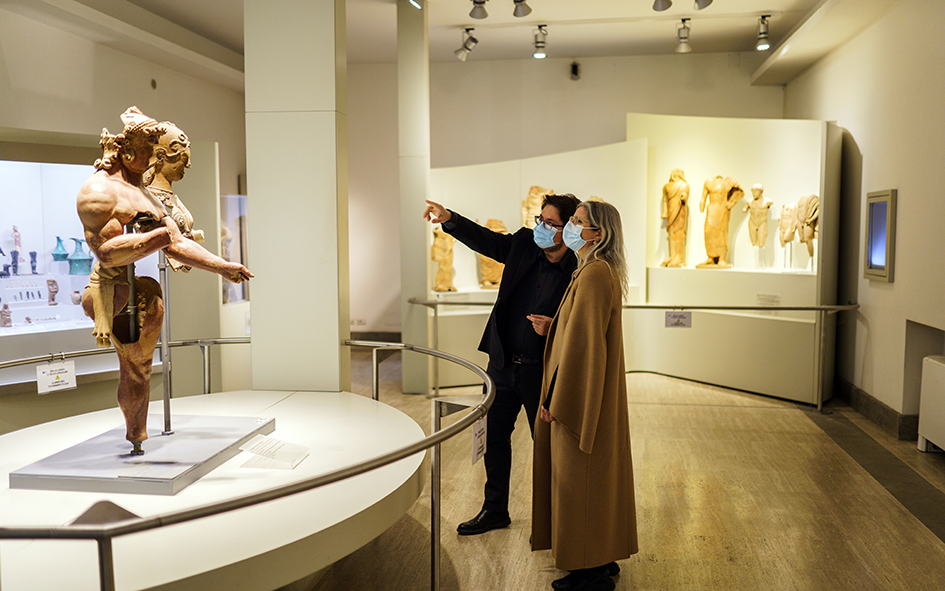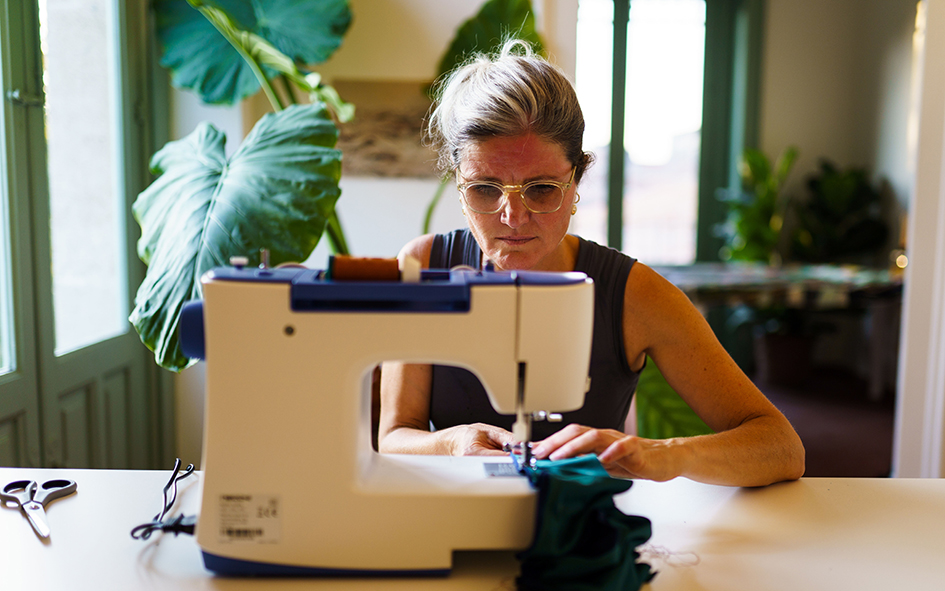Emma Talbot, Winner of the Max Mara Art Prize for Women, premieres new work at Whitechapel Gallery

The Age/L’Età Max Mara Art Prize for Women: Emma Talbot 30 June – 4 September 2022 #MaxMaraArtPrize #EmmaTalbot
Emma Talbot (b.1969), winner of the eighth edition of the Max Mara Art Prize for Women, premieres a new body of work at Whitechapel Gallery in June. The Age/L’Età comprises animation, free-hanging painted silk panels, three-dimensional work and drawings. The new work explores themes of representation and ageing, power and governance, and attitudes towards nature. For the Max Mara Art Prize for Women, Talbot imagines a future environment where humankind encounters the disastrous consequences of late capitalism and must look towards more ancient and holistic ways of crafting and belonging – that rethink ancient power structures and celebrate the natural world – in order to survive.

The exhibition is the result of a bespoke six-month Italian residency, organised by Collezione Maramotti. Following receipt of the prestigious biannual prize in 2020, Talbot travelled through Reggio Emilia, Catania and Rome, researching textile craftmanship, permaculture, classical mythology and exploring the myriad historic sites and institutions that inform the new body of work. The Age/L’Età takes Gustav Klimt’s painting Three Ages of Woman (1905), which Talbot had the opportunity to see first-hand during her residency, as its starting point. Klimt depicts an elderly woman holding her head in an expression of apparent shame. In her new work, Talbot reimagines this elderly figure as a woman with agency.

Talbot taught herself animation during lockdown when she was unable to go to her studio and a 12-chapter animation, in which Talbot’s protagonist must overcome a series of trials similar to The Twelve Labours of Hercules, is central to the exhibition. During her residency in Rome, Talbot investigated their depictions on ancient Etruscan ceramics, powerful conveyors of classical mythology, with Valentino Nizzo, Director of the Museo Nazionale Etrusco di Villa Giulia. Rather than overcoming the trials through destruction, theft, deceit and murder (as did Hercules), the protagonist employs productive, care-centered and practical solutions, inspired by the 12 principles of permaculture, a practice which offers an ethical, sustainable way of living with the land. Through her modern-day trials, the protagonist has the potential to reconstruct contemporary society, countering prevalent negative attitudes to ageing, power and the climate crisis. Also on display is a selection of Talbot’s original drawings for the animations.
The Age/L’Età also features two large-scale hanging silk works, hand-painted to depict near-future volatile landscapes of ruins and volcanic terrain which the central figure explores and inhabits. As with much of her work, Talbot has inscribed the silk with text addressing the themes of the show and invites viewers to question their own perceptions head-on. The subject matter of the silk works is informed by Talbot’s trips across Sicily, where she explored the volcanic landscape, ancient ruins, and studied the principles of permaculture at the Casa di Paglia Felcerossa. On the occasion of a collateral visit to Como, she learnt about practices of silk recycling with Mantero Seta, the first Italian company to produce 100% recycled silk. Talbot’s incorporation of recycled fabrics and use of sustainable resources within her practice imbues the work with questions about life cycles, renewal and agelessness.
The final element of The Age/L’Età is a physical manifestation of the central elderly figure, in the form of a life-size sculpture made from stuffed soft fabrics. Materials designed by the artist in collaboration
with IMAX Max Mara’s knitwear division were used to create the figure’s thick elderly outer skin, which resembles wrinkles and armour. Inspired by depictions of Hercules and scenes found on ancient Etruscan pottery, Talbot’s figure reaches towards the centre of a portal or net, produced by the artist in collaboration with Modateca Deanna, one of the most important Italian knitwear archives, through which she appears to approach a new world, alternative energies and a new way of being.
The Max Mara Art Prize for Women is a collaboration between Whitechapel Gallery, Max Mara and Collezione Maramotti and has been awarded in alternate years since 2005 to support UK-based female-identifying artists who have not previously had a solo survey exhibition. Known for launching the careers of artists, it is the only visual art prize of its kind in the UK. The previous winners of the prize are Helen Cammock, Emma Hart, Corin Sworn, Laure Prouvost, Andrea Büttner, Hannah Rickards and Margaret Salmon. The judging panel for the eighth Max Mara Art Prize for Women was chaired by Iwona Blazwick OBE, outgoing Director of the Whitechapel Gallery, joined by a panel of art world experts comprising gallerist Florence Ingleby, artist Chantal Joffe, collector Fatima Maleki and art critic Hettie Judah.
A short documentary about Talbot’s experience during her six-month Italian residency will be released on the occasion of the exhibition at the Whitechapel Gallery.
Following its presentation at Whitechapel Gallery, The Age/L’Età will travel to Collezione Maramotti in Reggio Emilia, Italy (23 October 2022 – 19 February 2023.)
Talbot has also been selected for The Milk of Dreams at the 59th International Art Exhibition of La Biennale di Venezia, curated by Cecilia Alemani, which is on until 27 November 2022.





